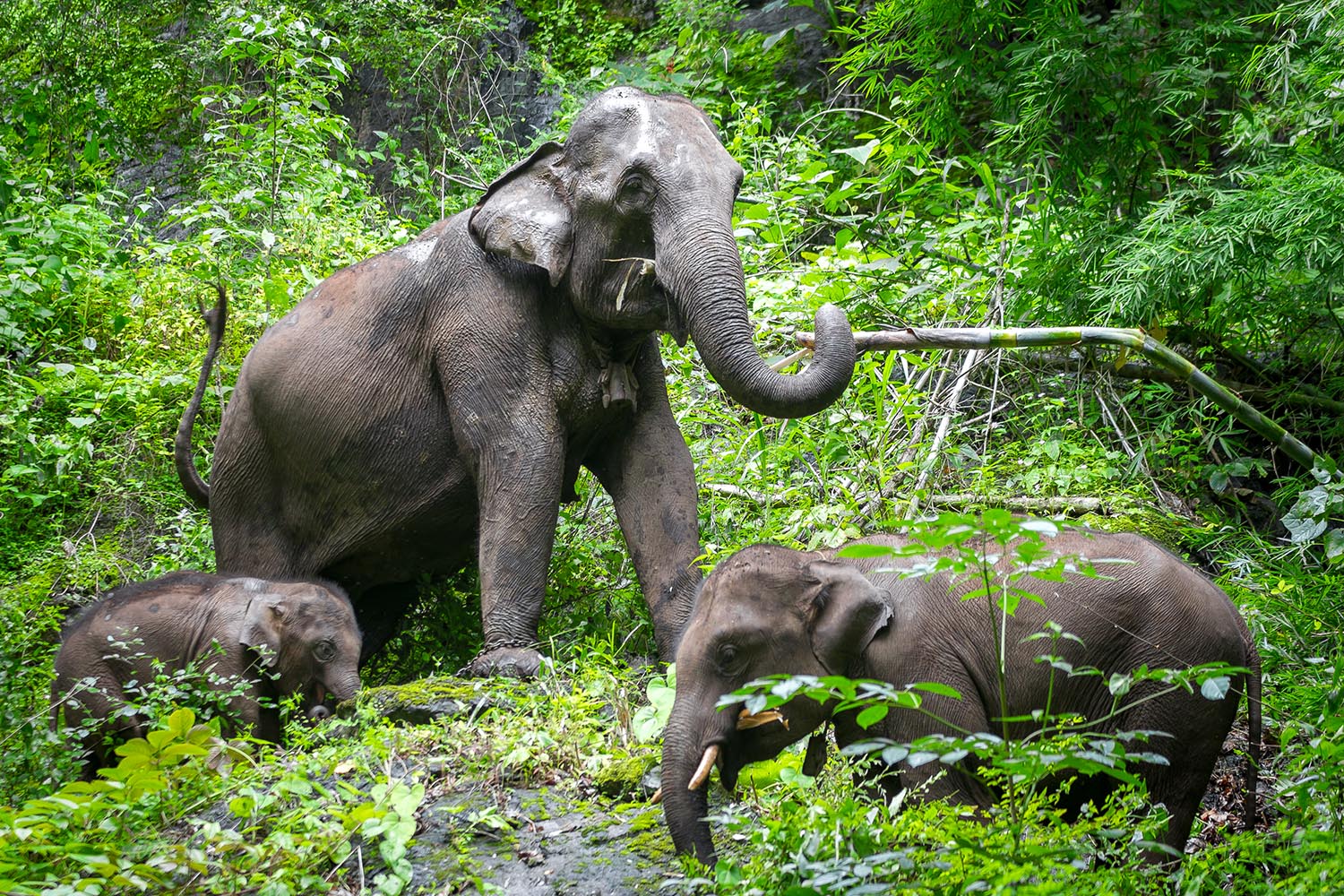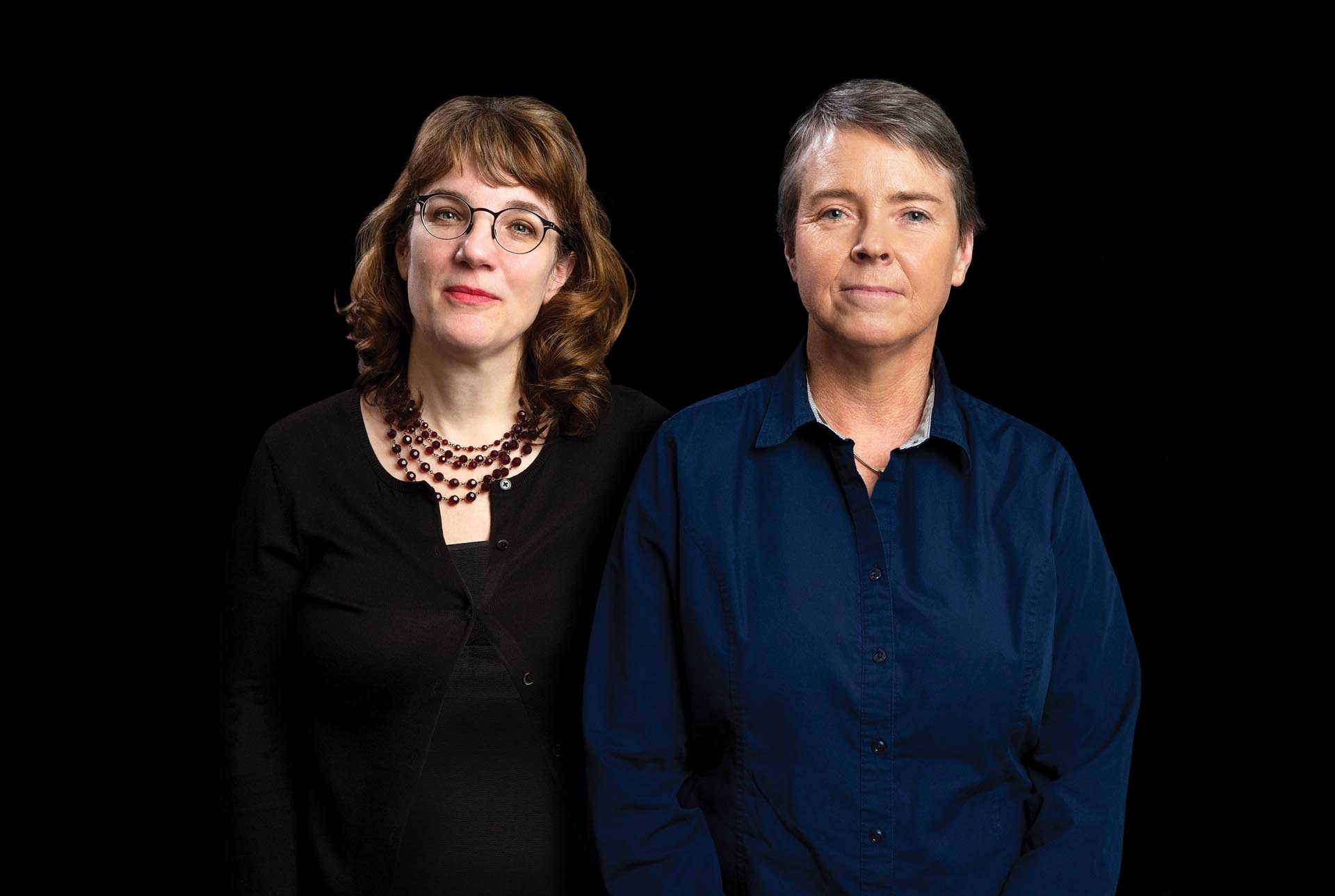Behind the Research: A Q&A with Assistant Professor of Psychology Mike Robinson

Assistant Professor of Psychology Mike Robinson’s classes and research focus on the brain mechanisms underlying motivation and reward and how they come together to produce desire and risky decision-making. Photo by Robert Adam Mayer
Q: You’re in the Department of Psychology, but you are also affiliated with Neuroscience and Behavior and involved with the College of Integrative Sciences. Can you explain how these areas intersect in your particular line of research/expertise?
A: In the Neuroscience and Behavior program, we have biologists who work on the brain and the nervous system, and psychologists who research cognitive processes that are tied back to functions of the brain, but nobody who is primarily a neuroscientist. I consider myself a behavioral neuroscientist. I fit nicely in the intersection between those two—housed in psychology but the majority of my students are neuroscience majors. So I help bridge that gap. And I also use techniques that draw on methods from genetics and physics—such as optogenetics, using lasers to control the brain. It’s a bioengineering technique that is very collaborative between fields and has been repurposed for neuroscience, medicine, etc. It is the use of these interdisciplinary approaches, and the fact that neuroscience is increasingly challenging the field of science to come up with new techniques to answer more complex questions that has brought me to get involved with the College of Integrative Sciences.
Q: What attracted you to the field of psychology?
A: I think about my questions from a very psychological perspective. I think about what matters for humans and what makes them tick and how we can deal with our very realistic problems.
I like understanding how we can break down into component parts a very complex problem from the human perspective and take it all the way to the animal one, to the behavior, and create animal models to ultimately understand how the brain works.
Q: You also teach classes on Intro to Neurobiology, Research Methods, Advanced Research Methods, and Motivation & Reward, which obviously tie in to your research. How closely are your research and your classes connected?
A: As much as possible! One of the things I care most about is allowing students to get the experience of animal research, which is something I never came across at the undergraduate level. I also strongly believe in making my classes fun, interesting, and exciting, which relates to the questions I ask. I want students to get a lot out of the class that’s usable beyond the classroom, to get a lot of added value from the class. Whether they’re going to be doing a PhD in animal research or not, the value they get from the class is irrespective of that. I gear my classes toward teaching as much transferable skills as possible, stuff the students can take outside of the lab—teaching them how to present their work and make a convincing pitch; how to write scientifically, but also to the general public. They learn how to design experiments, and through that they learn about team management and team functioning, which is really challenging. Too often we throw students together and tell them, “Go work as a team!” and assume that’s how teams are built, but it’s not teaching them.
Q: What are some of the ways that you try to make science creative and exciting for your students?
A: For Motivation and Reward instead of a final assessment I have students write a 500-word press release conveying the science of an article, but also making it cool and fun. One student did a Snapchat story on drug addiction and another did a cartoon, another wrote his piece as a scene in a play. It’s trying to get their creative juices out—something Wesleyan students have a lot of—but also teaching them vital communication skills. Any science they do will be absolutely pointless if they can’t get the community at large to buy into it. They are learning how to take complex ideas and put them in a way that a high school student, your mother, your grandfather can read it and understand it. Too often science is thought of as separate or too academic. I want the students to be able to present their science to the public in a way that says, “Let me show you that I want to relate to you and that I’m here to serve you, the people, not myself.”
Q: What do you want your students to get out of your classes and your lab?
A: I see the whole thing as experiential—going to a conference is about presenting your science, but it’s also about the experience itself, of seeing what other scientists have to say and whether or not this is a life that makes you think, “I need to do this!” The same with doing research with rats in a research course—to say, “I did that once.” Animal research is a once-in-a-lifetime opportunity, you’re never going to be able to just go out and try animal research for a weekend. I want to create those experiences for students because that’s when they start to care and reflect on where their lives are going. It is also when they learn the most. Through these experiences my students get a better grasp on the bigger picture, on understanding what it takes to get someone to care. They learn to think about their audience; why we are doing this. Having those experiences allows them to think in that way and to reframe things. That’s a skill that isn’t limited to science. It’s marketing as much as anything else. No matter what you eventually do in life, you’re going to have to sell it or pitch it to someone.
Mike Robinson is assistant professor of psychology; assistant professor, neuroscience and behavior; and assistant professor, integrative sciences. For more information on Robinson’s lab, classes, and research, visit the Robinson Lab website.



